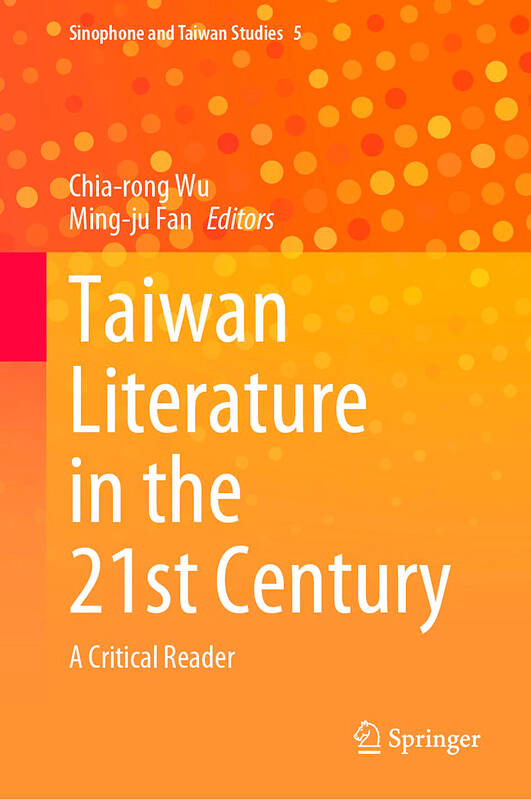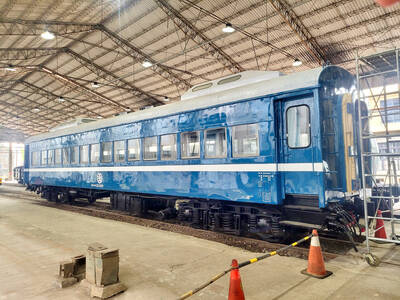This is a very interesting book, though the fact that its 17 chapters are written by different hands means that their quality inevitably varies.
The subject is the 21st century in Taiwanese literature. Although we are only 23 years into that century, if such a book had been written in 1923 about English works published up to that point, it would have included Joyce’s Ulysses, Eliot’s The Wasteland, most of Joseph Conrad and a good deal of Henry James.
Even so, this is inevitably a pioneering work, one of the first books off the mark in its subject area.

What precisely does it cover? It’s impossible to list all the titles mentioned, but among the works more frequently discussed are these.
First, though, a word about the two general editors. Chia-Rong Wu teaches at the University of Canterbury, Christchurch, New Zealand, while Ming-ju Fan teaches at the National Chengchi University in Taipei.
The book kicks off with Xia Yu (夏宇, Hsia Yu, born in 1956), described as a “towering figure” in the poetry scene in Taiwan, Hong Kong and China. Xia is also called “Taiwan’s most innovative contemporary poet” and a “cutting edge poet with a popular following.”
Next comes Lai Hsiang-yin (賴香吟) whose The Translator contains 12 prose fictions and covers the last 30 years in Taiwan from a largely political perspective. Published in 2017 it combines seven of the author’s previously published works with what were at the time five new fictions.
Her work, in which Japan, where she obtained a master’s degree, is also prominent, is notable, too, for White Portraits (Ink Publishing, 2022) depicting the lives of ordinary people during the White Terror period.
Li Ang (Shih Shu-tuan, 施淑端, born in 1952) follows. She is very prolific — Visible Ghosts, 2004, is just one example. A native of Lucheng, she has written many stories set in that region. In a chapter devoted just to this one author, academic Yenna Wu refers to Li Ang’s “somewhat mysterious and enigmatic” style.
Her An Erotic Feast for Lovebirds (2007) looks at food and politics during the White Terror, notably in a chapter entitled Beef Noodle Soup. The whole book is seen as deriving from the true life-story of Shih Ming-teh (施明德). Beef, though expensive, was a taboo food for many prisoners at that time.
Gan Yao-ming (甘耀明) follows, covered by Bert Scruggs of the University of California, Irvine. Gan, born in 1972, is widely considered to be at the forefront of new Taiwanese writers. From Miaoli County, he is much influenced by Hakka writing. His best-known books include The School of Water Ghosts and the Otter who lost his mother (2005), a historical novel Killing the Ghost (2009), and Pangcah Girl, which won First Prize in the Taiwan Literary Awards in 2015.
Scruggs sees Gan’s work as “magical” and rooted in the Magical Realism of, for instance, South America.
Modernist fiction is represented by the work of Wang Wen-Hsing (王文興) whose Clipping Wings was published in 2016. Wang is a Roman Catholic, and his novel reflects the influence of, among others, Flaubert. Redemption, and the possible relation between earth and heaven, are its themes argues S.Y. Chang who teaches at the University of Texas at Austin.
The prolific Michelle Yeh, of the University of California, Davis, returns to the poetry of Xia Yu, while an analysis of the science fiction of Lgoyan Zheng follows. His work has sometimes baffled scholars, however. Ground Zero (2013) and Dream Devourer (2010) are his best-known books, in which political concerns are yoked into the SF ethos. This chapter is by Wen-Chi Li of the University of Edinburgh.
Gay issues come to the surface in a consideration of Fatherless City (2019) by lesbian author Chen Xue (陳雪), notably after the Taiwanese legalization of same-sex marriage the same year. The writer here is Carlos Rojas of Duke University.
Other authors discussed are Liglav Awu (born 1969); her first collection of stories, Who Will Wear the Beautiful Clothes I weave (1996) was followed by two more collections in 1997 and 1998. Wu Ming-Yi’s (吳明益) The Stolen Bicycle (2015), Li Yong Ping’s Retribution: the Jiling Chronicles (1986), Huang Chong-Kai’s (黃崇凱) The Content of the Times (2017), Kevin Chen’s (陳思宏) Ghost Town (2019) and Shawna Yang Ryan’s Green Island (2016) also get mentioned.
To return to the hypothetical book on the first 23 years of the 20th century in England, many additional authors could be included such as Rudyard Kipling (Kim, 1900), Arnold Bennett (The Old Wives’ Tale, 1908), almost all of D.H. Lawrence (Sons and Lovers, 1913), H.G. Wells (The First Men in the Moon, 1901), and many more.
But the key point is that Taiwan has a population of only 23 million whereas the UK can claim almost 70 million. Taiwan’s achievement is consequently extraordinary, and this book more than does it justice.
This review cannot represent a check-list of all the Taiwanese authors prominent in the first 23 years of this century, but it does cover the main ones as presented by these editors. Taiwan Literature in the 21st Century hence offers an extremely useful guide to the most important names, together with close analyses of their main works and is consequently highly recommended.

The slashing of the government’s proposed budget by the two China-aligned parties in the legislature, the Chinese Nationalist Party (KMT) and Taiwan People’s Party (TPP), has apparently resulted in blowback from the US. On the recent junket to US President Donald Trump’s inauguration, KMT legislators reported that they were confronted by US officials and congressmen angered at the cuts to the defense budget. The United Daily News (UDN), the longtime KMT party paper, now KMT-aligned media, responded to US anger by blaming the foreign media. Its regular column, the Cold Eye Collection (冷眼集), attacked the international media last month in

On a misty evening in August 1990, two men hiking on the moors surrounding Calvine, a pretty hamlet in Perth and Kinross, claimed to have seen a giant diamond-shaped aircraft flying above them. It apparently had no clear means of propulsion and left no smoke plume; it was silent and static, as if frozen in time. Terrified, they hit the ground and scrambled for cover behind a tree. Then a Harrier fighter jet roared into view, circling the diamond as if sizing it up for a scuffle. One of the men snapped a series of photographs just before the bizarre

Power struggles are never pretty. Fortunately, Taiwan is a democracy so there is no blood in the streets, but there are volunteers collecting signatures to recall nearly half of the legislature. With the exceptions of the “September Strife” in 2013 and the Sunflower movement occupation of the Legislative Yuan and the aftermath in 2014, for 16 years the legislative and executive branches of government were relatively at peace because the ruling party also controlled the legislature. Now they are at war. The Democratic Progressive Party (DPP) holds the presidency and the Executive Yuan and the pan-blue coalition led by the

For decades, Taiwan Railway trains were built and serviced at the Taipei Railway Workshop, originally built on a flat piece of land far from the city center. As the city grew up around it, however, space became limited, flooding became more commonplace and the noise and air pollution from the workshop started to affect more and more people. Between 2011 and 2013, the workshop was moved to Taoyuan and the Taipei location was retired. Work on preserving this cultural asset began immediately and we now have a unique opportunity to see the birth of a museum. The Preparatory Office of National